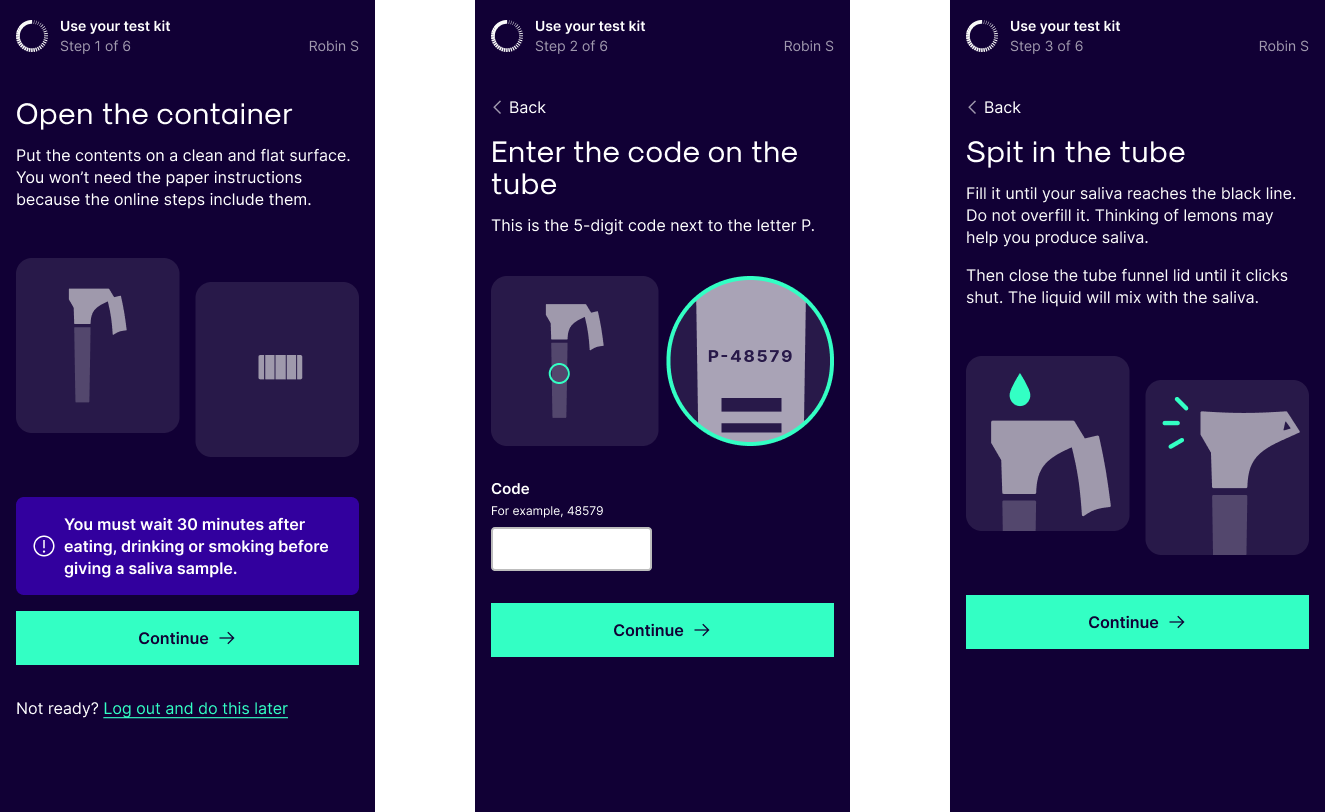Summary
I designed a new test kit experience for Health Insights, a genetic testing service in November 2023. This increased successful kit use by 9.7% as of January 2024 compared to the initial pilot service. Ideating with a product owner, a product designer and two developers, I contributed and owned product, user research, UX, UI and packaging design work in 2023.
Mistaken identity
In the pilot service, 10% of 1367 test kits returned to the lab were invalid. 5% were unidentifiable - no written date of birth - and 5% had unusable or missing saliva samples. This meant the lab couldn't return test results to those users and had to order them a new kit. It would take weeks to arrive. Previous user research also showed that some users did not find instructions easy.
'Consider rewriting the instructions - they were tricky.' - Sept 2022 questionnaire feedback
A new way to separate saliva
Working with developers, supply and lab teams, we found a new way for the lab to identify test kits instead of date of birth. For every test kit sent to users, we'd generate a unique code and print a copy on the tube inside. Before adding a sample, users would confirm their identity by entering the code into a website. If it matched the corresponding code in our database, we'd show instructions for giving a sample.
Test kit design overhaul
To support this, we needed to signpost users to activate online from the test kit. We already needed to redesign the test kit to support our new brand identity, so there was a lot of opportunities for exploration. I settled on a design based on informal feedback and printing cost considerations.



Online instructions
Taking our test kit experience online meant we could define instructions with fewer steps and support browser preferences like larger text. This addressed issues with the paper instructions used in the pilot that may have contributed to unusable samples.


Finding ways to test
Our US kit supplier had logistical challenges in providing us with kit contents before launch. This meant we couldn't send prototype test kits to prospective users in the US. As an interim measure, we uncovered critical usability issues by testing with new colleagues in the US not familiar with our test kit. Staggered service invites, our new easy-to-adjust online instructions and a plan to test with users after launch gave us confidence in our approach.


More good spits
Out of 518 kits delivered, the rate of unusable samples reduced to 0.5%, an improvement of 4.5%. The rate of unidentifiable samples shrank to 0.2%, an improvement of 4.8%. This meant an overall increase in successful samples by 9.7%.
Any testing is better than none
I was reminded that while testing with users does the most in reducing risk, testing with non-users from the target demographic remains a useful proxy.